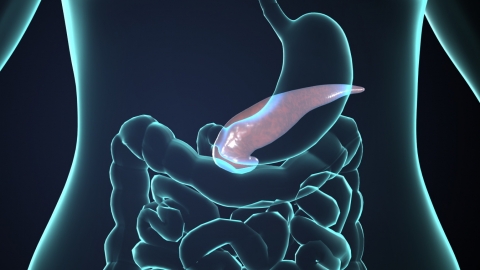How to improve pain after hepatobiliary and pancreatic surgery
Generally, pain after liver, biliary, or pancreatic surgery can be improved by following medical advice to take analgesic medications, adjusting body position to reduce tension, applying local cold compresses to relieve discomfort, limiting the range of motion to avoid irritation, and distracting attention to reduce the perception of pain. If pain continues to worsen or is accompanied by abnormal symptoms, it is important to inform the doctor promptly. The specific measures are as follows:
1. Take Analgesic Medications as Prescribed
Postoperative pain is often related to surgical wound irritation and tissue damage. Doctors will prescribe appropriate analgesic medications based on the severity of pain. Taking medication on time and in the correct dosage can suppress pain signal transmission, rapidly alleviate pain, and prevent pain from interfering with rest and recovery.

2. Adjust Body Position to Reduce Tension
Improper positioning after surgery may pull on the surgical wound or intra-abdominal tissues, worsening pain. Adopting a semi-recumbent or knee-flexed position can help relax abdominal muscles, reduce tension on the wound, and promote drainage of fluid from the abdominal cavity, thereby indirectly relieving pain.
3. Apply Local Cold Compresses to Relieve Discomfort
Within 48 hours after surgery, if there is no obvious fluid leakage or bleeding around the wound, a cold pack wrapped in a towel can be applied locally. Low temperature causes vasoconstriction, reducing tissue congestion and swelling, while also decreasing nerve sensitivity, thus alleviating pain and discomfort.
4. Limit Range of Motion to Avoid Irritation
Excessive movement or sudden changes in posture during the early postoperative period may irritate the surgical wound and surrounding tissues, triggering pain. Daily activities should be performed slowly, avoiding actions such as bending over, twisting the abdomen, or severe coughing, to minimize stimulation to the wound and prevent increased pain.
5. Distract Attention to Reduce Pain Perception
Pain perception is closely related to psychological state; focusing excessively on pain can amplify discomfort. Listening to music, watching videos, or talking with family members can help divert attention, relieve tension and anxiety, and indirectly reduce the sensation of pain.
In addition, it is important to monitor changes in pain. If pain does not improve after taking medication, or if signs such as warmth at the painful site or increased wound discharge occur, the doctor should be informed immediately. When applying cold compresses, avoid direct contact between the ice pack and skin, and limit each session to 15–20 minutes to prevent skin frostbite.




